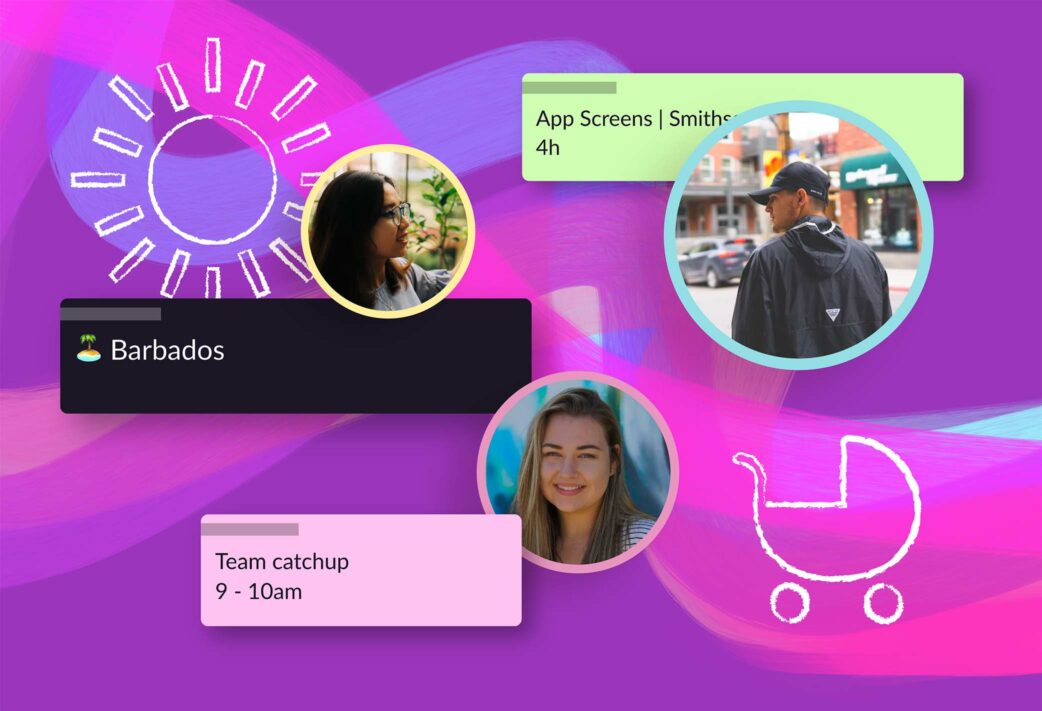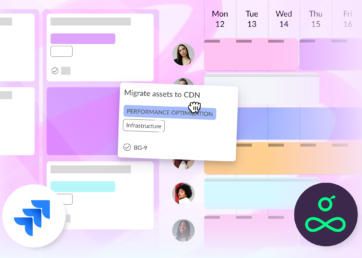I am notoriously overbooked, in both my personal and professional lives. I assure you, this is not a humble brag about either my popularity or my skills as a writer. My time and energy are the main —and often only—resources I have to offer both personally and professionally. The inability to allocate either effectively has resulted in missed deadlines, forgotten social events, and completely avoidable double bookings.
That said, my stakes for poor resource planning are relatively low. For teams and companies managing and executing multiple projects, however, the ability to manage resources effectively is critical.
To learn how your company (and you personally) can benefit from resource planning, keep scrolling.
In this article 📖
What is resource planning?
Effective resource planning ensures that your projects get finished on time, come in at (or under) budget, and don’t leave your employees drained by the time the project is complete. According to a recent report, 88% of organizations say that the implementation of a resource planning system helped them to succeed.
This resource planning guide will explain why a cloud-based resource planning tool is critical for transparent project communication. Whether you’re working from an office or a remote team use the guide for helpful tips, tools, and advice on how to do your resource planning correctly.
The importance of resource planning
Working backward from the desired result to figure out the steps needed to complete your project can be a reasonably straightforward process. What’s not easy is figuring out the following:
- How a project will get done
- When specific tasks will be finished—or started—and how long they will take
- Who will be responsible for doing specific tasks
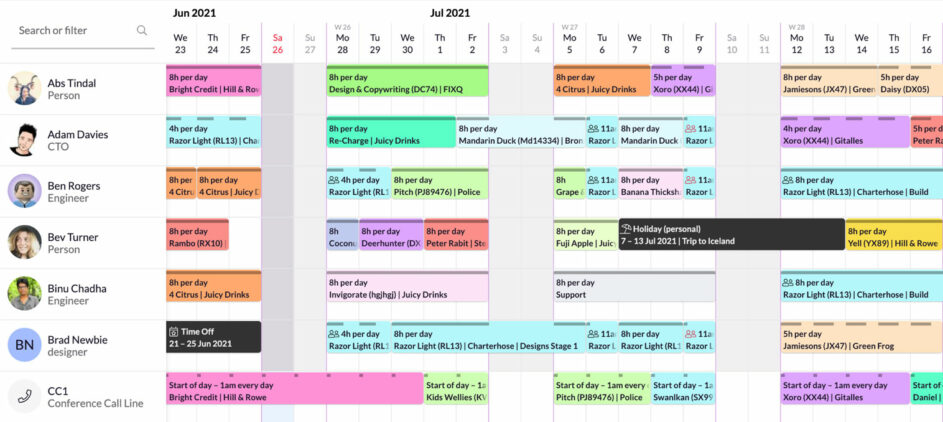
Project planning is the process that helps organize all the moving parts of your project. It’s what ensures that everything actually gets finished. Creating a project outline or scope of work enables you to figure out the what of your project.
Resource planning is a part of project planning, it figures out where resources go, whether they be human capital — a.k.a. your awesome team — or money, or equipment, or even space. In other words, resource planning helps you figure out the how, when, and who of a project.
Resource planning requires you to consider the constraints involved in completing your project. Although you know which resources you might need, you’ll have to figure out if they’re even available at the time you need them. For example, team members go on vacation, budgets get cut, and work can take longer than you expect.
Effective resource allocation helps you work through timeline, budget, and capacity issues. If you’re doing resource planning the right way, you’ll also build in appropriate buffers to account for unexpected delays or shortfalls.
The takeaway: If you want your project to actually get done, you need to decide how the work will be finished, who will complete each task, and when they’ll do it. And if you want your project to get done well, you’ll also have to plan for the unexpected and build buffer spaces into your project schedule and budget.
Common problems that can be avoided with effective resource planning
The whole point of resource planning is to make sure you’re using your resources in the most efficient way possible. Unfortunately, inefficiency is only the tip of the iceberg when it comes to solving common workplace problems with this method.
In this section, we’ll talk about some of the problems your organization could avoid with a few smart resource planning tips.
Lack of employee engagement and high turnover
Employees are a business’s most powerful resource, they’re the ones that get everything done. This means that it’s vital for you to use this resource responsibly. Resource planning helps you manage employee engagement so you can get the most out of the team whilst also ensuring that nobody is being overworked or spread too thin.
Overworking your employees can lead to burnout. Burnout is not only detrimental to your employees’ long-term health but is also a top reason for employee turnover, according to HR professionals.
That said, under-scheduling team members is also an issue. Employees who are bored at work are more likely to leave your company for new, more challenging opportunities. According to a recent survey, employees are more likely to search for a new job out of boredom, than out of a desire for a higher salary.
Of course, scheduling tasks for your employees just so they have something to do is never the right move. Fortunately, by keeping track of team members’ workloads, you can stay informed on who might be doing too much or too little.
The takeaway: Using a resource planning tool can help you both avoid piling too much work onto your employees or leaving them to twiddle their thumbs at their desks. By doling out the appropriate amount of tasks and responsibilities to each team member, you can keep them engaged, reduce turnover, and increase team morale.
Conflicting schedules for various resources
Whether it’s a team member’s time, extra dollars in your budget, or the use of a conference room – someone, somehow, will want to tap into these resources.
Even us adults can understand and respect the concept of calling dibs. Proper resource planning helps you lay claim to the resources you absolutely need to complete your projects on time.
The problem is, sometimes calling dibs falls through, especially when conflicting schedules and needs arise. With resource planning, you navigate these conflicts and find a solution that suits everyone. You can show how critical a resource is to your project at any point in your project timeline. And, if there is a need to reallocate resources out of respect for your colleagues’ projects —or because your boss told you to figure it out— you can use your existing resource plans to find a solution that meets everyone’s needs.
The takeaway: Resource planning allows you to stake your claim on the resources you need. It also helps spell out the logic behind why you need specific resources at the times that you’ve requested them.
Lack of clarity and accountability
Effective resource planning shows where all of your resources fit in the grand scheme of your project. Especially when it comes to allocating employee time and skills, the clarity that a well-thought-out resource plan brings can help illustrate the why—and when—for your team members’ tasks.
Using a cloud-based resource planning tool – or sharing a project overview doc with your team – can help increase employee understanding of where their work fits into the larger scheme of a project. It can also help communicate the importance of hitting deadlines and how one delay can waterfall into delays for an entire project.
The takeaway: Resource plans—especially when shared among your team members—can help your employees better understand the work they do. They can also help you keep track of who is supposed to complete things, when they’re supposed to do it, and how that impacts the larger project timeline.
Top 5 resource planning success factors
Many factors go into effective resource planning. Some of the key factors include:
- Pre-requisites
- Deadlines
- Project budgets
- Required skills
- Scheduling conflicts
The following section explains in more detail how each of these factors can influence resource allocation.


“Resource Guru is simple to use. It allows us to optimize our resources and keeps an eye on every project.”
1. Pre-requisites ✅
You can think of pre-requisites as a basic outline of your project. At a minimum, you’ll need a basic breakdown of the different steps or sections of your project to understand its scope fully.
Once you know what kind of tasks and activities your project involves, you’ll be able to estimate how long your project will last. The steps of your projects will also determine which resources you’ll need—employees with certain skill sets, equipment, venue space, etc.—to see your project to completion.
To figure out project steps, duration, and necessary resources, you’ll need to get your hands on some historical data. If your organization has done similar projects in the past, how long did they take to complete? Who worked on them, and how quickly did they finish? What quality work did they produce? Did the project come in over or under budget? How can you plan this project to avoid past mistakes?
Armed with your project outline, necessary historical data, a duration estimate, and resource requests, you’re ready to start moving on your resource planning.
2. Deadlines 📅
Most projects come with a deadline attached. To ensure that you complete projects on time, you’ll need to make sure that all the resources you need are available for the duration of your project before the deadline. Especially when you have multiple projects running at once, you’ll need to use deadlines to plan your team’s time accordingly. With a looming deadline, work on one project might take precedence over work on another.
3. Project budgets 💰
To plan effectively, you’ll need to make sure that all labor, equipment, space, and extraneous costs fit your project budget. Your team might have enough time to tack on some extra-cool new features for a client, for example. But if the cost of that extra work comes in over budget, your client—and your expense sheet—won’t be pleased.
4. Required skills 👩🏽💻
You might have a team of amazing developers who can produce quality work for a variety of tasks. However, some projects might require more specialized talent.
Say you only have one person in your whole organization who can complete a certain type of task, for example. You’ll need to make sure they’re available to work on your project at the time that they’re needed instead of booked to work with someone else’s team. Otherwise, you might have to hire a contractor or bring on a new employee – and you’ll have to factor that into your project timeline and budget.
5. Scheduling conflicts ❌
Having many incoming projects is a good problem to have. However, if you’re taking on more work with the same size team, you may run into a resource conflict. You might need one team member to work on multiple projects at the same time. And, depending on the scope of your ongoing projects, there might not be enough hours in the day for them to complete their work.
When one project’s resources conflict with another’s you’ll have to make some changes to accommodate it. To avoid burning out individual employees or whole teams- you have a couple of options:
- Push back project deadlines, this could involve negotiating project expectations with a client
- Do some hiring by putting out a call for a short-term contractor or f a more permanent employee
Resource planning considerations
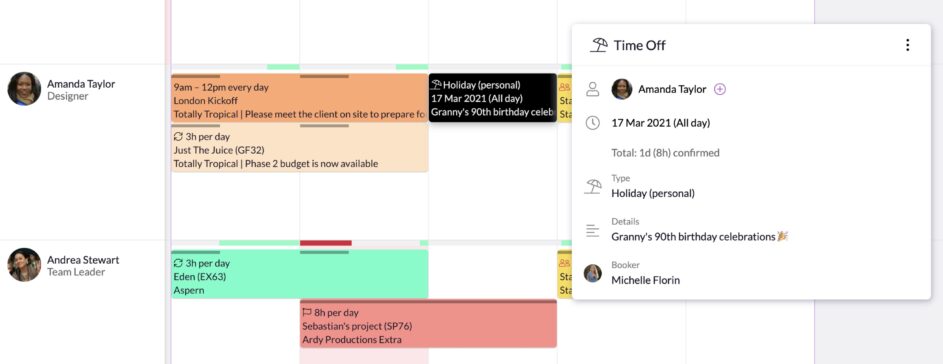
When creating your resource plan, you always need to account for something going wrong—like a pandemic, for example—that could throw off your project timeline. You also need to account for some things going right, like your team members periodically taking a well-deserved vacation that you’ll also need to adjust for.
Any time out of the office will have to go into your resource plans. This includes:
- Holidays
- Sick days
- Productivity levels when working remotely or out of the office
To plan for times when your employees are unavailable, your resource planning process should always involve resource-leveling. Resource leveling means evaluating your team members’ workloads to ensure that no one is scheduled over capacity.
When you find that someone is overbooked, you bring their workload back down to the appropriate level by reassigning tasks or rescheduling work.
However, resource leveling is the bare minimum when it comes to creating reasonable workloads across projects for your employees. To create a resource plan that preemptively accounts for delays, you’ll have to use a technique called resource smoothing. Resource smoothing involves calling for fewer hours from employees than they’re normally expected to work.
Creating a large buffer for your employees will result in fewer available hours to fill with project tasks. However, it also creates extra time where your team members can either put in extra hours on tasks that are taking longer than expected, work on your inevitable backlog, or even take time for personal projects.
The takeaway: Employees aren’t machines and don’t work predictably, even under the best of circumstances. Using resource smoothing techniques to create buffer time in your employees’ schedules can help account for any unexpected delays in project work. And factoring in absences like vacation and sick days is a necessary part of any good resource plan.
Use a resource planning tool or template to streamline your process
So many factors go into resource planning that it makes sense to organize everything in one place.
For basic resource planning for one project, you can use a resource scheduling template. A template is also a good place to start when figuring out how to do resource planning without getting bogged down in how to use a new tool or system.
However, when you start planning for multiple projects happening simultaneously across your organization and you require multiple resources to carry them out – you’ll likely want a more high-powered tool.
Resource planning software can help project managers across your organization allocate and use resources efficiently. Using a tool that creates one resource pool for your company can cut down on scheduling conflicts and increase transparency between teams.
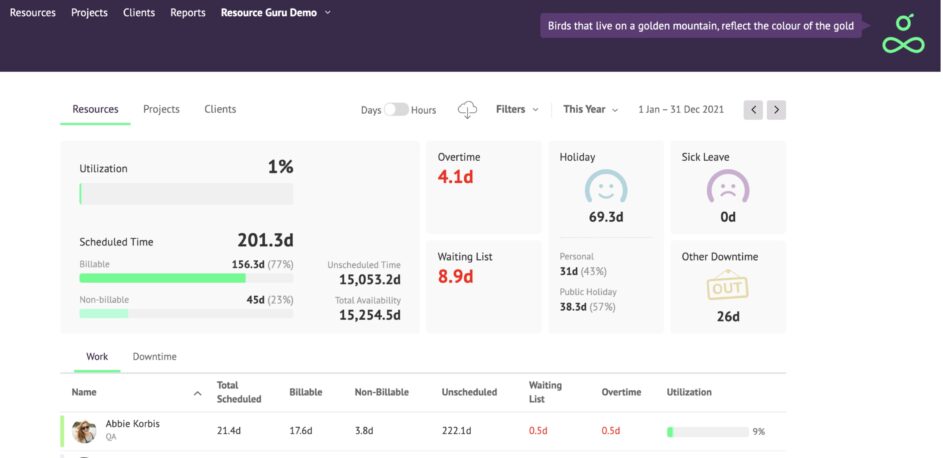
A powerful resource planning tool will:
- Make resource scheduling quick and easy
- Provide full visibility into how team members are scheduled, especially employees who work on multiple projects across different teams
- Allow you to account for time off and scheduling buffers
- Organize ongoing work by employee skills, existing projects, and active clients
- Help employees and managers see exactly what they should be working on and when
Resource Guru is one option to consider when evaluating resource planning tools. Are you ready to see what managing your resources effectively looks like? Start your 30-day free trial today!


